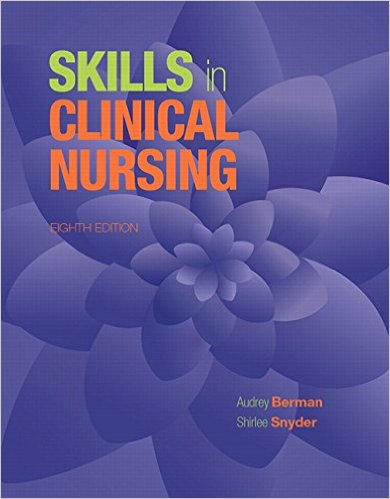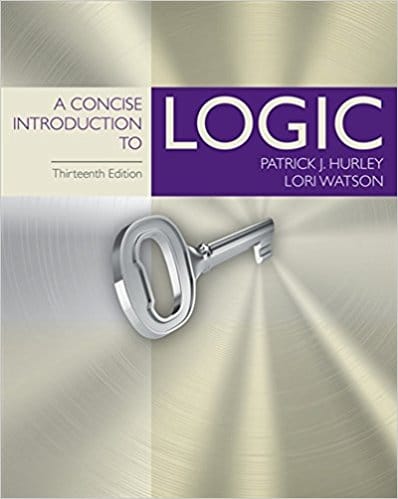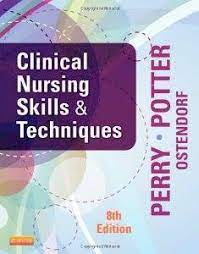Skills in Clinical Nursing 8th Edition by Audrey J. Berman- Shirlee Snyder – Test Bank
Chapter 6
Exam Name___________________________________
MULTIPLE CHOICE. Choose the one alternative that best completes the statement or answers the question.
1) The nurse is caring for a client on bed rest with bathroom privileges. While the client is in the 1) bathroom, the nurse changes the client’s bed and makes the bed in what way?
A) Unoccupied open bed B) Occupied open bed C) Unoccupied closed bed D) Surgical bed
Answer: A Explanation:
A) The bed is unoccupied, and the nurse would make an open bed, with the top sheets folded back, so the bed is ready for the client to return to. An occupied bed would be used if the client were unable to get out of bed. A closed bed is made with the top covers over the entire bed to keep the bed clean when not in use. A surgical bed would be made using extra materials in preparation for the returning postoperative client.
Cognitive Level: Application
Client Need: Physiological Integrity Nursing Process: Implementation
B) The bed is unoccupied, and the nurse would make an open bed, with the top sheets folded back, so the bed is ready for the client to return to. An occupied bed would be used if the client were unable to get out of bed. A closed bed is made with the top covers over the entire bed to keep the bed clean when not in use. A surgical bed would be made using extra materials in preparation for the returning postoperative client.
Cognitive Level: Application
Client Need: Physiological Integrity Nursing Process: Implementation
C) The bed is unoccupied, and the nurse would make an open bed, with the top sheets folded back, so the bed is ready for the client to return to. An occupied bed would be used if the client were unable to get out of bed. A closed bed is made with the top covers over the entire bed to keep the bed clean when not in use. A surgical bed would be made using extra materials in preparation for the returning postoperative client.
Cognitive Level: Application
Client Need: Physiological Integrity Nursing Process: Implementation
D) The bed is unoccupied, and the nurse would make an open bed, with the top sheets folded back, so the bed is ready for the client to return to. An occupied bed would be used if the client were unable to get out of bed. A closed bed is made with the top covers over the entire bed to keep the bed clean when not in use. A surgical bed would be made using extra materials in preparation for the returning postoperative client.
Cognitive Level: Application
Client Need: Physiological Integrity Nursing Process: Implementation
Objective: Learning Outcome 6-1: Define the key terms used in the skill of bed-making.
1
2) The nurse is caring for a client in shock, and places the bed at an angle with the head lower than the 2) feet. This position is called the:
A) Reverse Trendelenburg position. B) Trendelenburg position. C) Fowler’s position. D) Semi-fowler’s position.
Answer: B Explanation:
A) The Trendelenburg position is used to place the head lower than the feet to improve blood flow to the brain. Reverse Trendelenburg places the bed straight but at an angle that puts the feet lower than the head. Fowler’s position raises the head of bed into a 90-degree angle so the client is sitting upright. Semi-Fowler’s raises the head of the bed approximately 45 degrees so the client’s head is upright at a reclining angle.
Cognitive Level: Knowledge
Client Need: Physiological Integrity
Nursing Process: Implementation
B) The Trendelenburg position is used to place the head lower than the feet to improve blood flow to the brain. Reverse Trendelenburg places the bed straight but at an angle that puts the feet lower than the head. Fowler’s position raises the head of bed into a 90-degree angle so the client is sitting upright. Semi-Fowler’s raises the head of the bed approximately 45 degrees so the client’s head is upright at a reclining angle.
Cognitive Level: Knowledge
Client Need: Physiological Integrity
Nursing Process: Implementation
C) The Trendelenburg position is used to place the head lower than the feet to improve blood flow to the brain. Reverse Trendelenburg places the bed straight but at an angle that puts the feet lower than the head. Fowler’s position raises the head of bed into a 90-degree angle so the client is sitting upright. Semi-Fowler’s raises the head of the bed approximately 45 degrees so the client’s head is upright at a reclining angle.
Cognitive Level: Knowledge
Client Need: Physiological Integrity
Nursing Process: Implementation
D) The Trendelenburg position is used to place the head lower than the feet to improve blood flow to the brain. Reverse Trendelenburg places the bed straight but at an angle that puts the feet lower than the head. Fowler’s position raises the head of bed into a 90-degree angle so the client is sitting upright. Semi-Fowler’s raises the head of the bed approximately 45 degrees so the client’s head is upright at a reclining angle.
Cognitive Level: Knowledge
Client Need: Physiological Integrity
Nursing Process: Implementation
Objective: Learning Outcome 6-1: Define the key terms used in the skill of bed-making.
2
3) The nurse is providing the client with a hygienic and comfortable environment when performing 3) all of the following except:
A) Speaking softly in the hall of the facility.
B) Obtaining a bed extender for the client who is very tall.
C) Placing a room deodorizer in the room of the client with asthma who complains of the odor in
the room.
D) Maintaining room temperature between 68 and 74°F.
Answer: C Explanation:
A) Deodorizers might be contraindicated for the client with respiratory disorders. All of the other activities are supportive of the client’s environmental needs. Cognitive Level: Application
Client Need: Physiological Integrity
Nursing Process: Implementation
B) Deodorizers might be contraindicated for the client with respiratory disorders. All
of the other activities are supportive of the client’s environmental needs. Cognitive Level: Application
Client Need: Physiological Integrity
Nursing Process: Implementation
C) Deodorizers might be contraindicated for the client with respiratory disorders. All of the other activities are supportive of the client’s environmental needs. Cognitive Level: Application
Client Need: Physiological Integrity
Nursing Process: Implementation
D) Deodorizers might be contraindicated for the client with respiratory disorders. All
of the other activities are supportive of the client’s environmental needs. Cognitive Level: Application
Client Need: Physiological Integrity
Nursing Process: Implementation
Objective: Learning Outcome 6-2: Describe the elements to consider when providing clients with a hygienic and comfortable environment.
4) The nurse caring for an elderly man diagnosed with dementia bathes the client and changes the 4) wound dressing. Prior to leaving the room, the nurse should do which of the following?
A) Raise the side rails.
B) Place the head of the bed in the semi-Fowler’s position. C) Place the bed in the low position.
D) Remove the footboard from the bed.
Answer: C Explanation:
A) The nurse should return the bed to the low position to prevent injury to the client if he attempts to get out of bed autonomously. Side rails are generally contraindicated with most clients suffering from dementia because of the risk for injury if they attempt to crawl over the rail. The position of the bed would be determined by the time of day, activities the client will be performing, and client preference. There would be no reason to remove the footboard from the bed. Cognitive Level: Application
Client Need: Safe, Effective Care Environment Nursing Process: Implementation
3
- B) The nurse should return the bed to the low position to prevent injury to the client if he attempts to get out of bed autonomously. Side rails are generally contraindicated with most clients suffering from dementia because of the risk for injury if they attempt to crawl over the rail. The position of the bed would be determined by the time of day, activities the client will be performing, and client preference. There would be no reason to remove the footboard from the bed. Cognitive Level: ApplicationClient Need: Safe, Effective Care Environment
Nursing Process: Implementation
- C) The nurse should return the bed to the low position to prevent injury to the client ifhe attempts to get out of bed autonomously. Side rails are generally contraindicated with most clients suffering from dementia because of the risk for injury if they attempt to crawl over the rail. The position of the bed would be determined by the time of day, activities the client will be performing, and client preference. There would be no reason to remove the footboard from the bed. Cognitive Level: Application
Client Need: Safe, Effective Care Environment
Nursing Process: Implementation - D) The nurse should return the bed to the low position to prevent injury to the client if he attempts to get out of bed autonomously. Side rails are generally contraindicated with most clients suffering from dementia because of the risk for injury if they attempt to crawl over the rail. The position of the bed would be determined by the time of day, activities the client will be performing, and client preference. There would be no reason to remove the footboard from the bed. Cognitive Level: ApplicationClient Need: Safe, Effective Care Environment
Nursing Process: Implementation
Objective: Learning Outcome 6-2: Describe the elements to consider when providing clients with a hygienic and comfortable environment.
5) The nurse is caring for a client in respiratory distress. What would be the best bed position for this 5) client?
A) Semi-Fowler’s position B) Trendelenburg position
C) Flat
Answer: D Explanation:
D) Fowler’s position
A) The client with respiratory distress will breathe more easily if the bed is placed in the Fowler’s position, because it reduces the compression of the abdominal contents into the stomach and allows for full lung expansion. Semi-Fowler’s position is the best choice if Fowler’s position is not possible due to the client’s condition, but is not as good as Fowler’s because it still allows some intrusion of abdominal contents into the diaphragm and limits full excursion. Trendelenburg position would be contraindicated because this causes abdominal organs to press into the diaphragm. Flat is also contraindicated, and will increase the client’s respiratory distress.
Cognitive Level: Analysis
Client Need: Physiological Integrity Nursing Process: Implementation
4
- B) The client with respiratory distress will breathe more easily if the bed is placed in the Fowler’s position, because it reduces the compression of the abdominal contents into the stomach and allows for full lung expansion. Semi-Fowler’s position is the best choice if Fowler’s position is not possible due to the client’s condition, but is not as good as Fowler’s because it still allows some intrusion of abdominal contents into the diaphragm and limits full excursion. Trendelenburg position would be contraindicated because this causes abdominal organs to press into the diaphragm. Flat is also contraindicated, and will increase the client’s respiratory distress.Cognitive Level: Analysis
Client Need: Physiological Integrity Nursing Process: Implementation - C) The client with respiratory distress will breathe more easily if the bed is placed in the Fowler’s position, because it reduces the compression of the abdominal contents into the stomach and allows for full lung expansion. Semi-Fowler’s position is the best choice if Fowler’s position is not possible due to the client’s condition, but is not as good as Fowler’s because it still allows some intrusion of abdominal contents into the diaphragm and limits full excursion. Trendelenburg position would be contraindicated because this causes abdominal organs to press into the diaphragm. Flat is also contraindicated, and will increase the client’s respiratory distress.Cognitive Level: Analysis
Client Need: Physiological Integrity Nursing Process: Implementation - D) The client with respiratory distress will breathe more easily if the bed is placed in the Fowler’s position, because it reduces the compression of the abdominal contents into the stomach and allows for full lung expansion. Semi-Fowler’s position is the best choice if Fowler’s position is not possible due to the client’s condition, but is not as good as Fowler’s because it still allows some intrusion of abdominal contents into the diaphragm and limits full excursion. Trendelenburg position would be contraindicated because this causes abdominal organs to press into the diaphragm. Flat is also contraindicated, and will increase the client’s respiratory distress.Cognitive Level: Analysis
Client Need: Physiological Integrity Nursing Process: Implementation
Objective: Learning Outcome 6-3: Identify indications for common bed positions.
Related Test Bank
Single Subject Research Applications in Educational and Clinical Settings 2nd Edition – Test Bank











